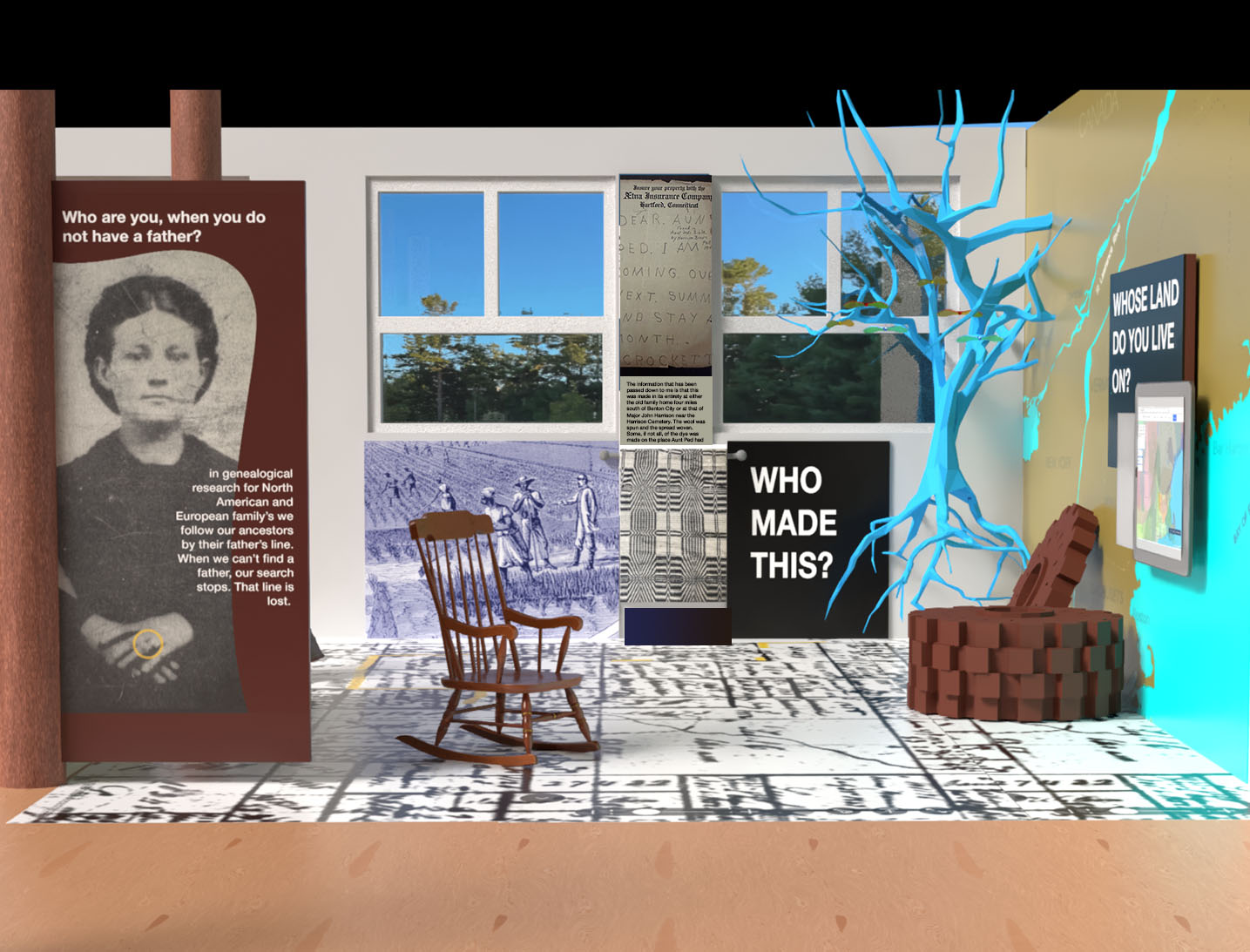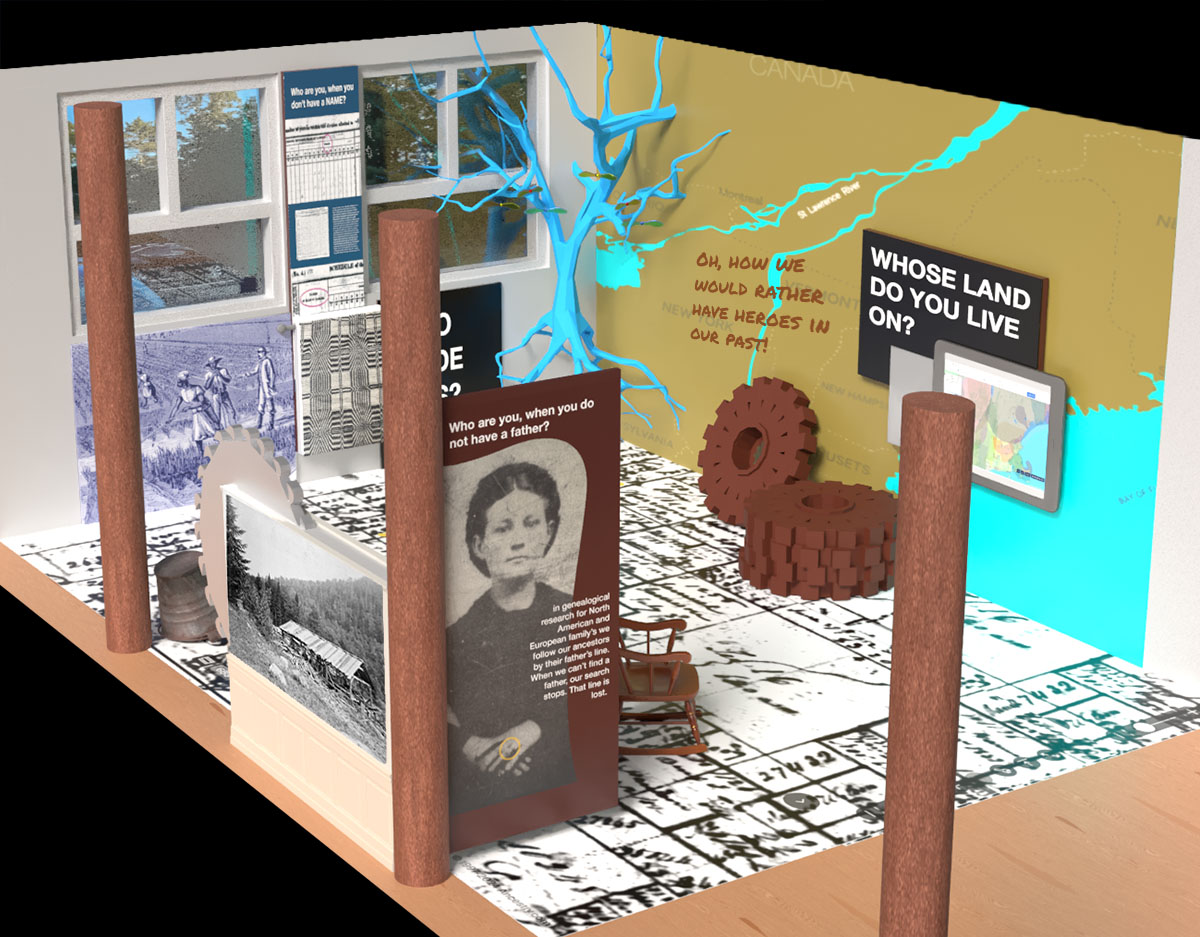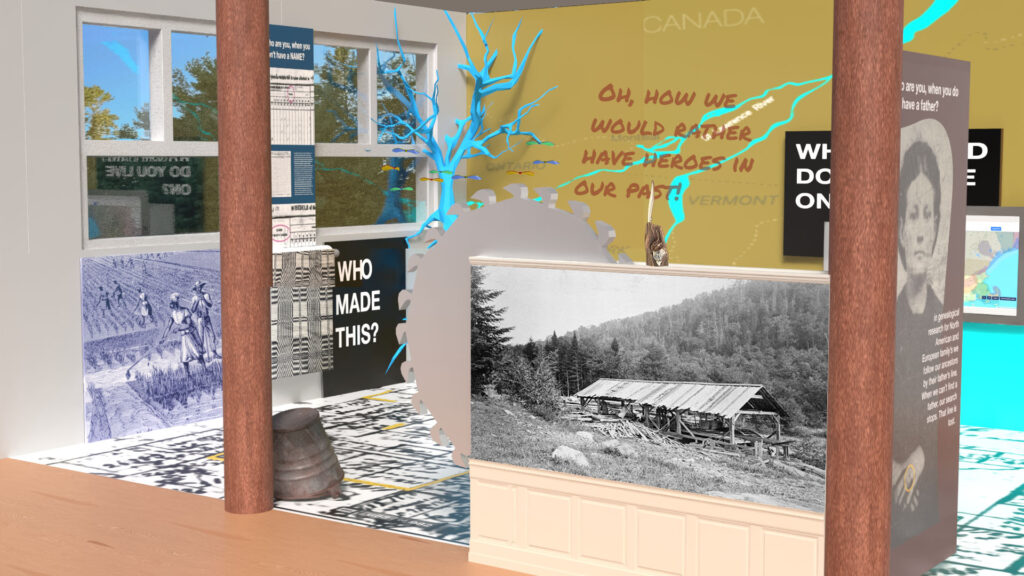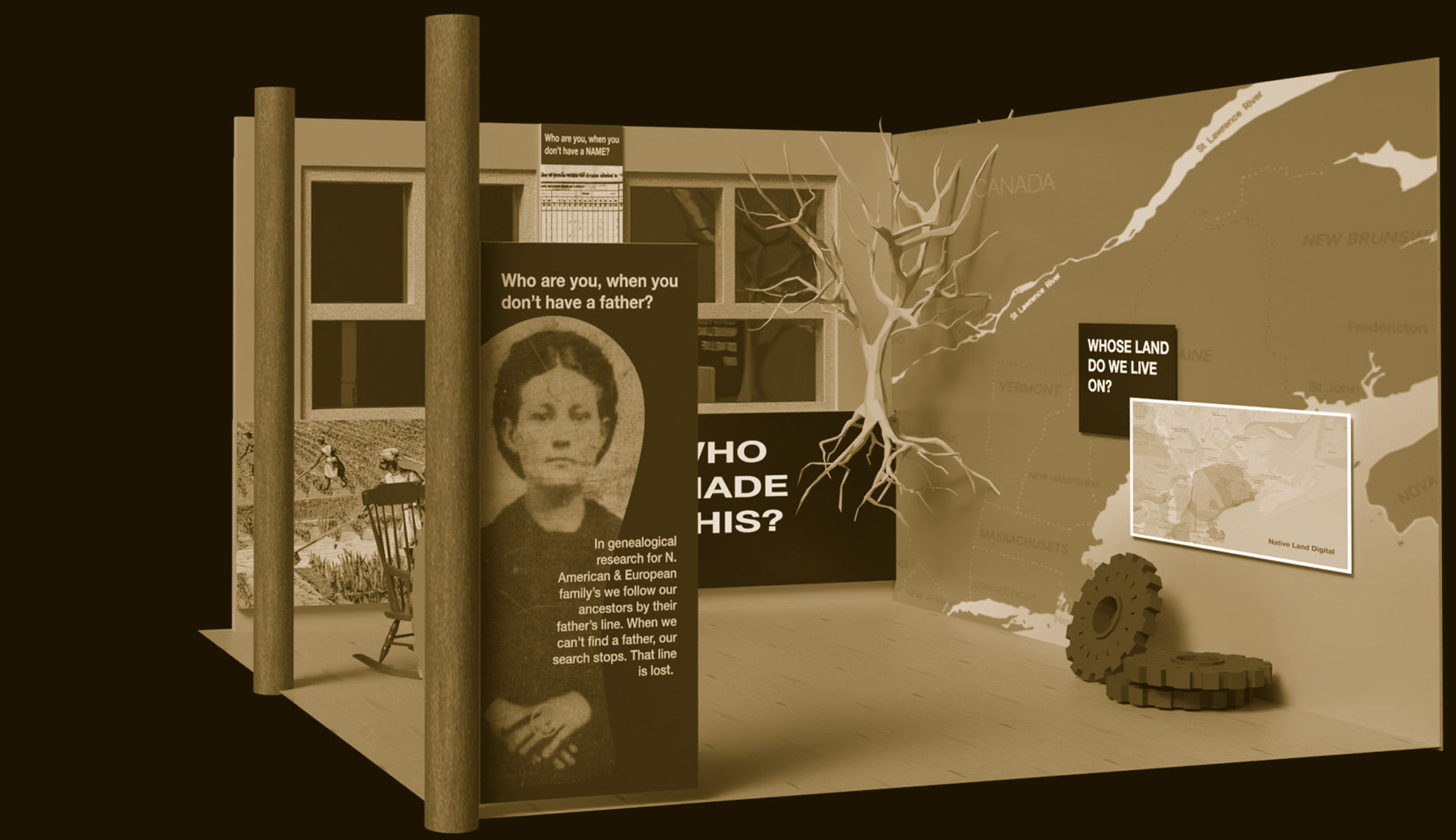Objects
Any version of the installation, in a large or small space, will include objects that may be sculpture or found object pieces.
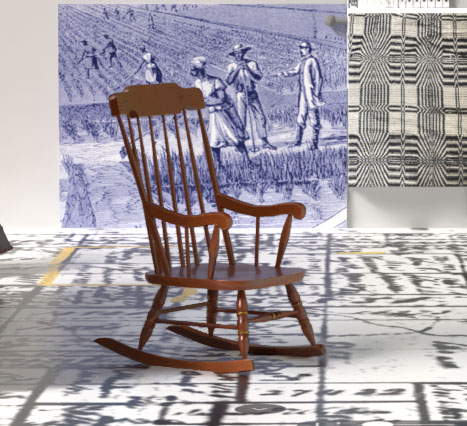
rocking chair
Scavenged or bought second hand. Refinish to be less comfortable. Words, pictures.
Folks can sit in it, but can’t rock. Rockers cut and if possible, chair restrained.
Speaking Tree
Outdoor sculpture material, hollow, light as possible. Allow folks to speak to their ancestors through notes slipped in tree. What happens to notes?
Big! Blue! A stylized Maple with hanging seed copters to move in any breeze.
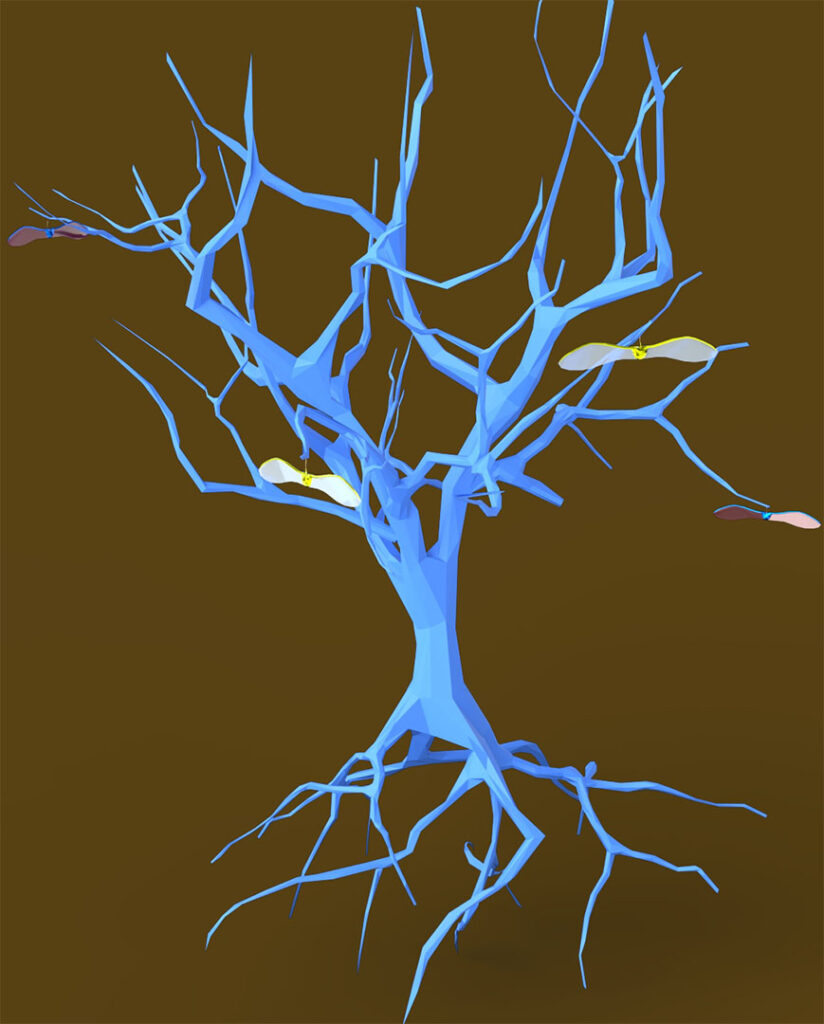
Media & Interactives
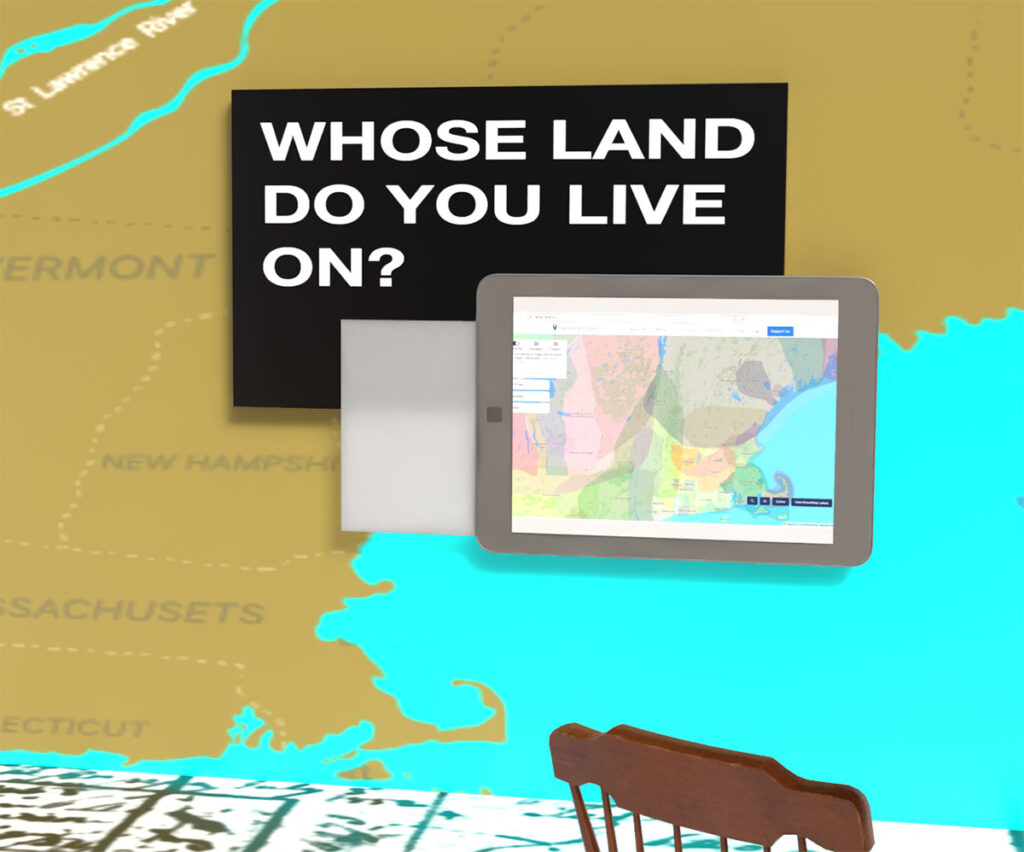
Whose Land?
Museum style display with a touchscreen interactive display of Native American lands, and where they correspond to today’s states. A simple awareness tool. we have to become comfortable with and understand how to live with the fact that our ancestors killed to have the place we have now.
Description panel, information panel, interactive touchscreen. There may also be an activity that can be done here besides, looking up with your particular house has taken over native land.
Who made this?
An ancestral story display. We have a family artifact that is an indigo dyed woven cotton coverlet. Made in Missouri in the 1800s, we think. The style of the artwork on the cover it the style of weaving is particular to the Americas of this time. In our story displayed on the wall above, it is understood that the cotton and indigo were grown on a family “farm“ or nearby. It is also told that it was woven by family. in researching this type of artifact, before emancipation enslaved people planted and harvested that indigo and cotton. And it is unclear who were the Weavers of these coverlets. This an area where I am doing more research.
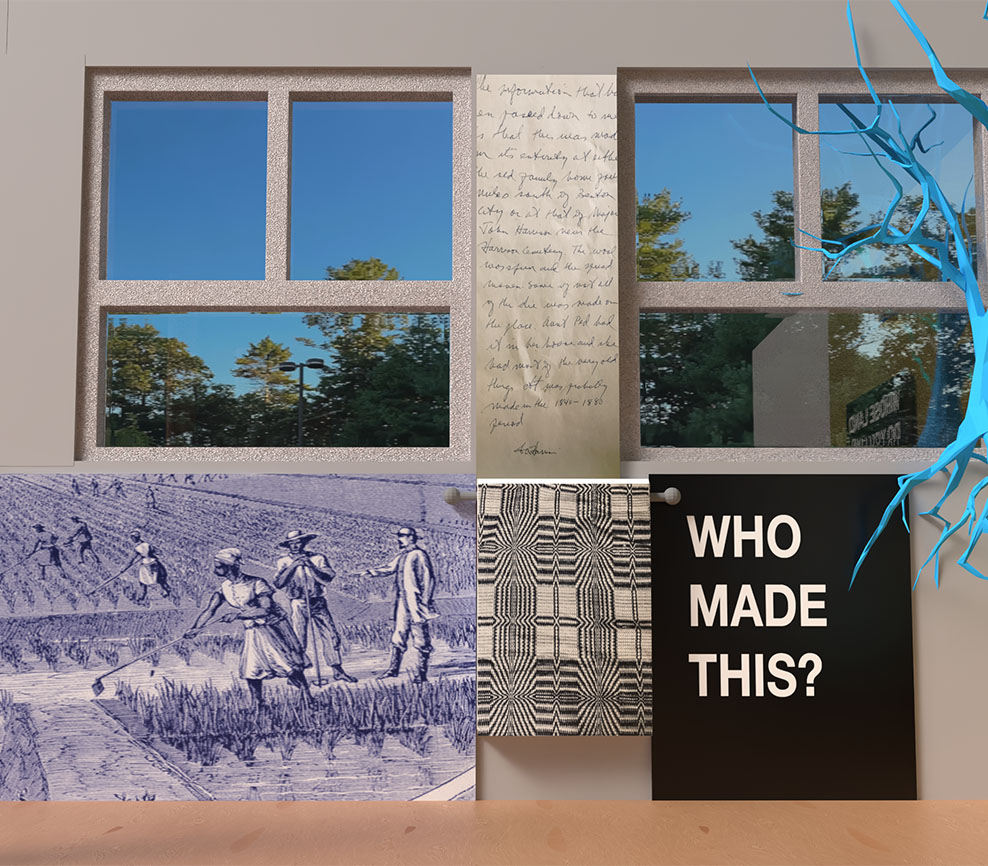
Scenes
Initial digital 3-D maquettes of the installation in a loft style setting
